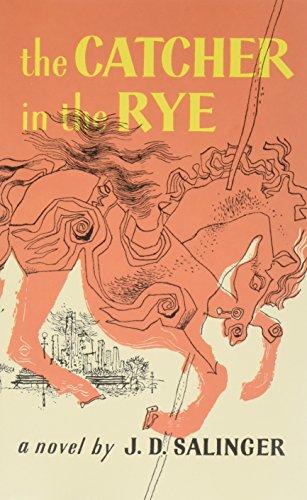Mental Yoga Sunday posts are meant to be like a big mute button you aim at the rest of the world. Just you, your chair, a mug, a spot next to a dust-filled sunny spot or a rainy window. Take in a long form read...sip by sip.
"Por favor. Call 911," the man says. "Finger. Cut." He authenticates his succinct claim by holding up his blood-streaked fore-arm. With his left hand, he is clenching a wad of handkerchief around his right pinky.
I feel certain this is a scam and want to tell him to piss off, but I've never seen this bloody forearm ploy before, and I don't know how it plays out. "No. Have. Phone." I say, as if English is also my second language.
"Have phone," he says and dips his chin toward his front pants pocket.
I don't want to stick my hand in there, but I have no proof this is a con job, and the blood does look real, so I gesture for my kid to stay on the stoop and I move toward him. Maybe there isn't even a pocket in there, I think, maybe it's just a hole and I'm going to touch his penis. Or maybe as soon as my hand is inside he'll snatch my wrist and steal my money, kidnap my kid, and touch my boob.
In his pocket, I find a flip-phone. I slip it out and step back out of arms' reach.
I stare at the phone. "I don't know how to use it." Which is true. Even though it's 2004, I have never used a cellphone before.
He grits his teeth and lifts his face to scan the street for anyone else - besides this stupid lady - to help him. He's shit out of luck, this street is deserted and I'm all he's got. He takes a deep breath, steps toward me and points with the pinky of his good hand at the button marked "talk." As I press the nine, the one, and the one, I think, Finally! I've always wondered when I would get to call 911.
The operator answers and after I give her the address I say, "I'm here with this guy, and he says he cut his finger."
"Is it bad?" the operator asks me, being a better person than I, she doesn't immediately doubt the veracity of his claim.
"Is it bad?" I ask him.
"Si." - Read Full Story
"The concourses inside the mall were empty; its hallways quiet. No shoppers anywhere, no sales clerks to be found. Storefronts were lit and stocked with merchandise, Muzak played. But otherwise, the place was deserted. As I looked around, I noticed that the entire mall was rendered in spare parts pulled from memory, a Brutalist apparition. It had a common area and glass elevator that I recognized from the movie Weird Science, where Gary and Wyatt, played by Anthony Michael Hall and Ilan Mitchell-Smith, are publicly humiliated when their preppy tormentors pour a cherry Icee on their heads from the mall's second floor. The white hexagonal skylights were an architectural detail pulled from Fairlane Town Center in suburban Detroit-a mall I visited only once with my wife, Michelle, and our oldest son Ethan, when he was still a toddler. And the terrazzo floors were identical to those at Monroeville Mall.
As I approached the food court in the center of the mall, it was as if someone had flipped a switch, bringing an entire community of automatons to life. It was quiet one moment, then cacophonous. There were men and women engaged in conversation while eating large slices of pizza; a father and his young daughter in line at an ice cream shop, deciding which flavor to choose; a young couple kissing in the far corner near a gumball machine; and a group of old men in windbreakers sipping coffee near a decorative fountain. But something strange had also happened. The immediate landscape of the mall was crystalline and defined except where it disappeared into a stark black abyss at its edges. It reminded me of the set for The Charlie Rose Show, and how Charlie and his guests and even the table between them all seem to hover in the eternal black of the universe, as if suspended on wires. When I looked out toward the edges, there was nothing." - Read Full Story
" Before dawn six days a week, Norma Ulloa left the two-bedroom apartment she shared with four family members and boarded a bus that took her to a stifling factory on the outskirts of downtown Los Angeles.
She spent 11 hours a day there, pinning Forever 21 tags on trendy little shirts and snipping away their loose threads in the one-room workshop. On a good day, the 44-year-old could get through 700 shirts.
That work earned Ulloa about $6 an hour, well below minimum wage in Los Angeles, according to a wage claim she filed with the state.
Ulloa's claim is one of nearly 300 filed since 2007 by workers demanding back pay for producing Forever 21 clothing, according to a Los Angeles Times review of nearly 2,000 pages of state labor records.
Sewing factories and wholesale manufacturers have paid hundreds of thousands of dollars to settle those workers' claims. Forever 21 has not had to pay a cent." - Read Full Story
" In a potato field near the Netherlands' border with Belgium, Dutch farmer Jacob van den Borne is seated in the cabin of an immense harvester before an instrument panel worthy of the starship Enterprise.
From his perch 10 feet above the ground, he's monitoring two drones-a driverless tractor roaming the fields and a quadcopter in the air-that provide detailed readings on soil chemistry, water content, nutrients, and growth, measuring the progress of every plant down to the individual potato. Van den Borne's production numbers testify to the power of this "precision farming," as it's known. The global average yield of potatoes per acre is about nine tons. Van den Borne's fields reliably produce more than 20.
That copious output is made all the more remarkable by the other side of the balance sheet: inputs. Almost two decades ago, the Dutch made a national commitment to sustainable agriculture under the rallying cry "Twice as much food using half as many resources." Since 2000, van den Borne and many of his fellow farmers have reduced dependence on water for key crops by as much as 90 percent. They've almost completely eliminated the use of chemical pesticides on plants in greenhouses, and since 2009 Dutch poultry and livestock producers have cut their use of antibiotics by as much as 60 percent." - Read Full Story

" Near the end of J D Salinger's The Catcher in the Rye (1951), the novel's hero Holden Caulfield buys his sister Phoebe a ticket to the carousel in the park and watches her ride it. It begins to rain, and Holden - having spent most of the book in some form of anxiety, disgust or depression - now nearly cries with joy. 'I was damn near bawling, I felt so damn happy, if you want to know the truth. I don't know why. It was just that she looked so damn nice, the way she kept going around and around, in her blue coat and all.'
Holden watches his sister reach out for a ring from her bobbing horse, and he has a profound revelation: life is about maintaining some form of optimism and innocence - of continuing to try, even in the midst of an impossible world. Later, Holden says he gets 'sick', but now he is mostly sanguine: he plans to go to a new school in the autumn and is looking forward to it. Holden has had an emotional experience and, as a result, has found himself. This, in turn, will allow him to enter society, which marks his growing up.
The term Bildungsroman was coined by the philologist Karl Morgenstern in the 1820s to denote 'the hero's Bildung (formation) as it begins and proceeds to a certain level of perfection'. The term grew in popularity when in 1870 Wilhelm Dilthey wrote that the quintessential Bildungsroman was Johann Wolfgang von Goethe's Wilhelm Meister's Apprenticeship (1796), in which the protagonist has the double task of self-integration and integration into society. According to Dilthey, self-integration implies social integration, thus the Bildungsroman is concerned predominately with leading the protagonist (and the reader) into his productive societal place. It is largely from this tradition that most contemporary coming-of-age culture, Salinger included, springs.
Take, for instance, the fact that the culminating fight scene in most superhero stories occurs only after the hero has learned his social lesson - what love is, how to work together, or who he's 'meant to be'. Romantic stories climax with the ultimate, run-to-the-airport revelation. The family-versus-work story has the protagonist making a final decision to be with his loved ones, but only after almost losing everything. Besides, for their dramatic benefit, the pointedness and singular rush of these scenes stems from the characters' desire to finally gain control of their self: to 'grow up' with one action or ultimate understanding." - Read Full Story

